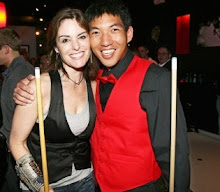In my previous post, I discussed the technical differences between pool table felt and cloth. For recreational players, the biggest choice is what color cloth to get while paying as little as possible. Why should you pay for more expensive cloth? Let's go over what makes one cloth better than the next.
First of all, it's important to consider what kind of qualities you want in a cloth. It should be consistent over the entire bed of the table, obviously, but how much do you care about characteristics like durability and stain resistance or more technical features such as speed? Some of the answers will depend on the environment your table is being used (indoor, outdoor, commercial, tournaments), how much use it will get, and what kind of players will be playing on it.
Cheaper cloth will often be made of napped wool. It looks and feels fuzzier. On other hand, more expensive cloth is made of worsted wool, so it feels smoother. You can think of napped wool as what is used for sweaters and worsted wool as what is used for expensive suits. The cloth is rarely pure wool; it's generally blended with 10-30% of nylon helping with strength and durability. The nap can lead to an uneven playing surface as well as wearing out differently over time. Worsted wool, on the other hand, will play more consistently both in terms of across the whole surface as well as over time.
Touching on durability, the fuzziness of the cloth can pill up and pulling these out can damage the fibers. This is more difficult, if not impossible, with worsted wool. But the other thing you have to look for is the weight of the cloth. The greater the weight, the more material there is per unit area. This should make the cloth more durable as well.
The weight can also contribute to the stain resistance of the cloth. The more tightly woven the fibers are, the more difficult it will be for the cloth to absorb liquids. The nap will generally help absorb liquid. You can also get cloth that is coated in Teflon to help repel stains.
As you might imagine by now, napped wool will play slower than worsted wool due to increased friction from the nap. This requires you to put in more effort to play a faster shot and to put the same amount of spin on the cue ball. Also the nap will 'take' the spin faster if you can generate it. On a worsted wool, the cue ball will have a tendency to slide more before the spin grabs the cloth and changes the trajectory of the cue ball. This can affect your cue ball control.
Making an investment in a worsted wool cloth is important if you want to have the highest standard of play. It will generally play faster, more evenly, and last longer than a napped wool. It will be more expensive in the beginning, but it will pay for itself and give you more enjoyment for the game.
